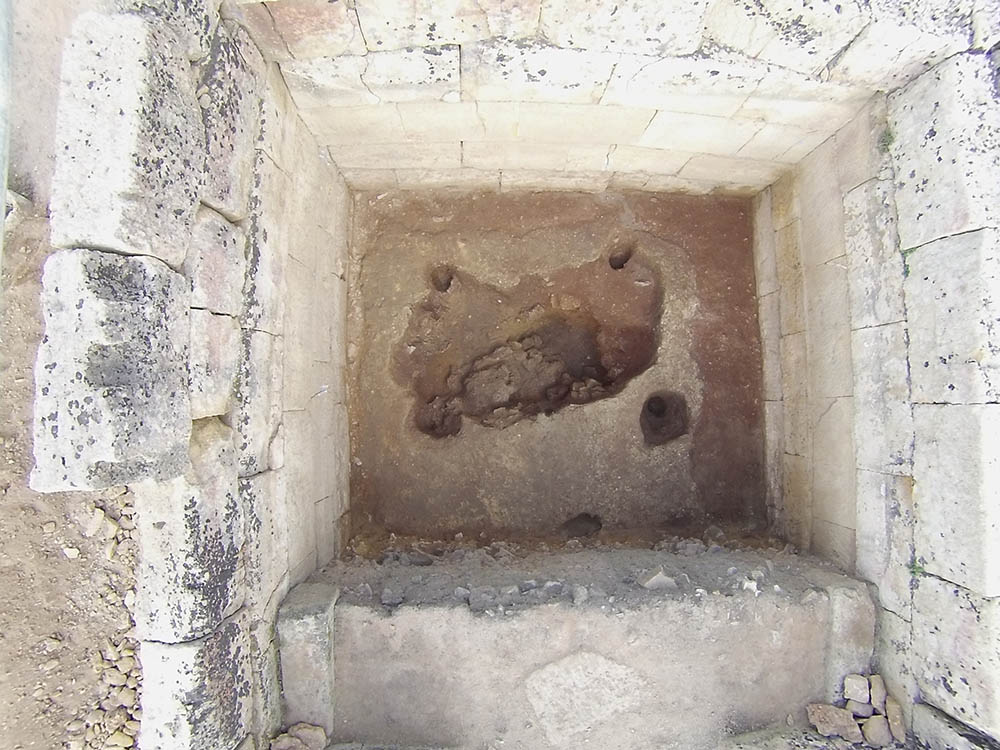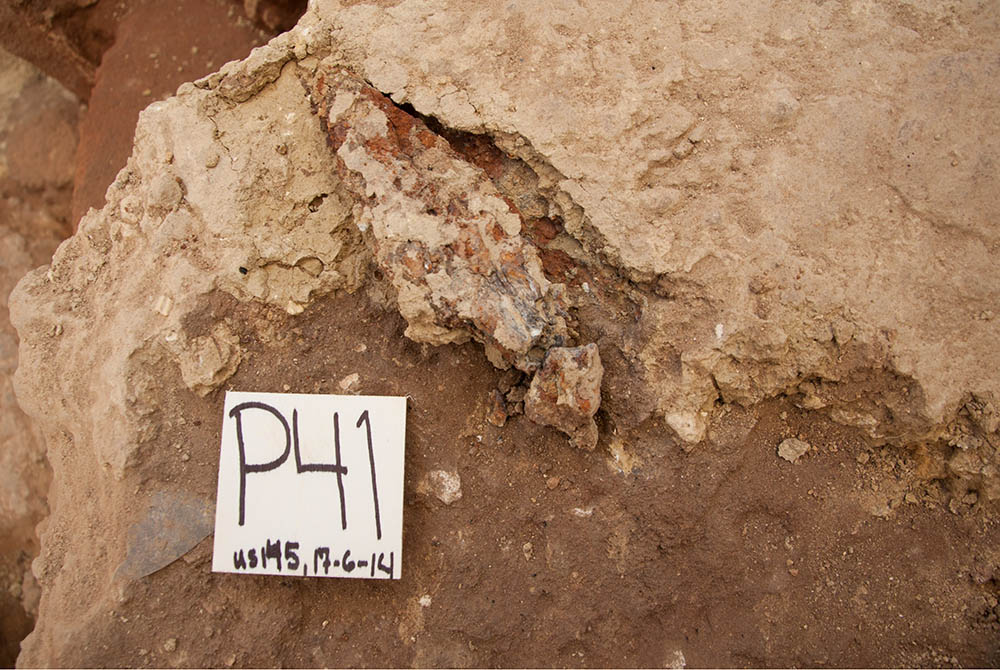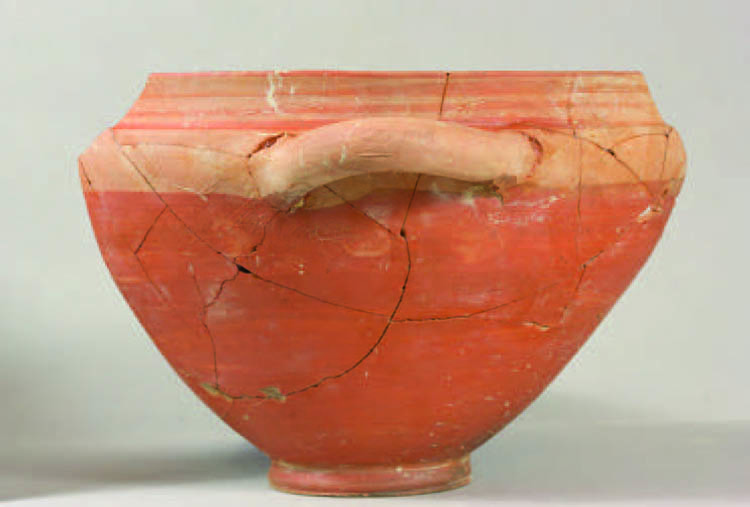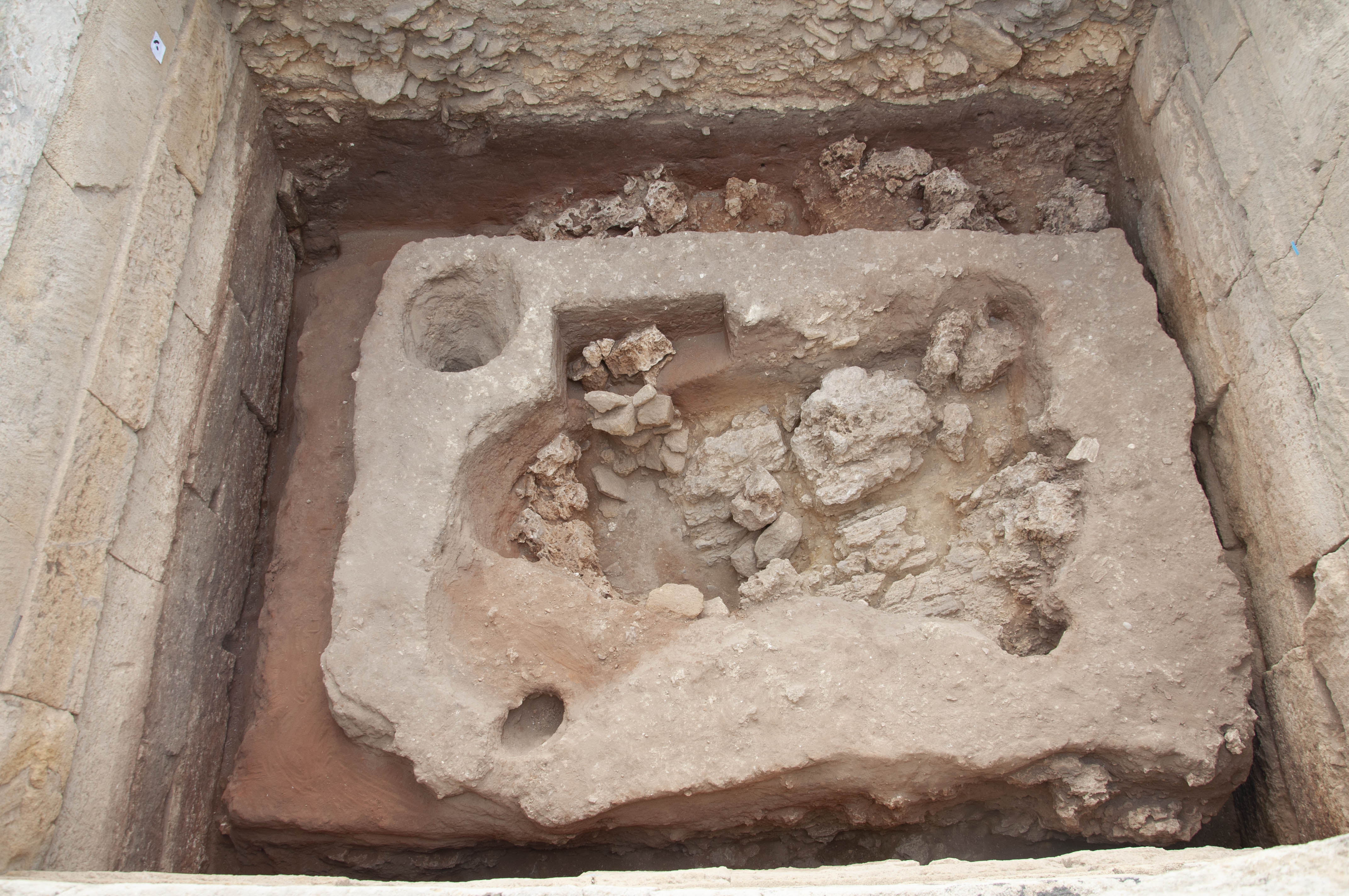 | In the Field
| In the Field

IFA Excavations at Selinunte
Summary of Excavation Results, 2015
The ninth campaign of excavation in the main urban sanctuary was conducted between May and June of 2015, thanks to the support of the Institute of Fine Arts, NYU, in collaboration with the Archeological Park of Selinunte. During this abbreviated season work was focused on completing the excavation of the stratigraphy beneath the adyton, or rear chamber, of Temple R. Trench P, which saw the excavation of much of the adyton from 2013 through 2015, allows for a thorough understanding of the chronology of this area of the urban sanctuary, and especially the lifespan of the various phases of Temple R, from the prehistoric period up until the abandonment of Selinunte by the Carthaginians during the Punic Wars ca. 250 BCE, and even traces of interventions by earlier excavations of the twentieth century.
At the beginning of the 2015 season, the trench had a highly irregular appearance [Figure 1] – a yellow clay surface (SU 145) covers part of the trench, the floor of a predecessor structure. It is disrupted, though, by an irregularly high number of cuts. In the center, the remnants of a large ovoid looting pit dating to the post-409 BCE era of Selinunte cuts down to bedrock. On three sides, one finds the cut of the foundation trench (SU 153), and its fill (SU 154). Across the trench, there are several other circular cuts, the remnants of post-holes that were likely associated with the construction of Temple R, and discussed at length in previous reports.

Figure 1. View of Trench P at the beginning of the 2015 excavation. © Institute of Fine Arts, NYU.
Our work opened with the removal of the clay surface found across the area of the trench, belonging to some form of a predecessor structure to Temple R. This pavement likely once covered the entirety of the trench, and its current dimensions strongly suggest that the predecessor structure likely in many way mimicked, at the very least, the dimensions of the current adyton. This floor was cut on its north, west, and south sides during the construction of Temple R, whose date is now set to ca. 580–570, due to the discovery of the fragment on an Attic cup in the excavation of the fill of the trench of foundation on the north side. Pottery found in the floor of the predecessor and in the preparation layer underneath helps date this early structure to 610 ca. BCE and confirms its cultic function.
Particularly significant was the discovery, within the clay floor, of an iron spearhead [Figure 2], deposited during the construction of the building. This form of ritual deposition has been documented by our excavations also in association with the later construction of Temple R in the early sixth-century and its early fifth-century renovation (attested in Trench O in 2012) and the construction of the South Building (attested in Trench K in 2009). No less significant was the discovery, in the floor of this predecessor structure, of a fragmentary cup [Figure 3] with subgeometric decoration of a type attested at Megara Hyblaea, the mother city of Selinunte.

Figure 2. Iron spear from the floor of the predecessor structure. © Institute of Fine Arts, NYU.

Figure 3. Subgeometric cup from the floor of the predecessor structure. © Institute of Fine Arts, NYU.
Underneath this late seventh-century floor we found a layer (SU 167) corresponding to the earliest phase of colonial occupation. Composed of dark brown sandy-mud, this stratum is clearly marked as inhabited due to the comparatively large quantity of bones and ceramics found in this layer. The nature of the layer is still a matter of conjecture – the bones do not bear signs of burning in high temperature, but rather common butchery. Hence, one could imagine that this is the early habitation layer of the area, potentially concentrated and/or moved from its original location as use for the preparation layer for the floor above, but the pottery found within does contain the shapes (cups, principally) and fabrics (a high proportion of fine wares) that one would expect in a cultic context. The earliest pottery found in this context dates to the Late Protocorinthian period, supporting the dating of the foundation of the Greek colony in 628–627 BCE, as suggested by Thucydides.
Underneath one reaches what appear to have been largely sterile layers of sand resting on bedrock [Figure 4]. The reddish, highly loose sand (SU 166) that had already been seen clearly in section along the sides of Temple R’s foundation trench (SU 153), is similar to that found across the site (found in a similar form also on the Manuzza hill by the DAI excavations). Almost certainly, this layer is a natural formation. While scattered Bronze Age sherds were found in these precolonial strata in other trenches, there remains no evidence in this area of the acropolis of a phase of Iron Age occupation preceding the arrival of the Greek colonists ca. 628–627 BCE.

Figure 4. View of Trench P at the conclusion of the 2015 season. © Institute of Fine Arts, NYU.
Clemente Marconi, The Institute of Fine Arts, New York University